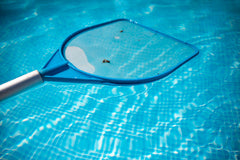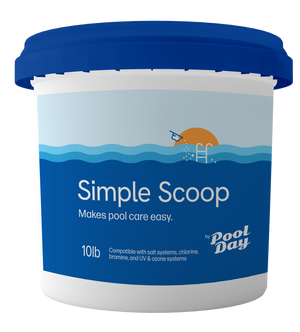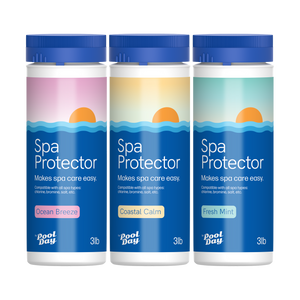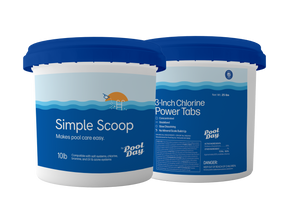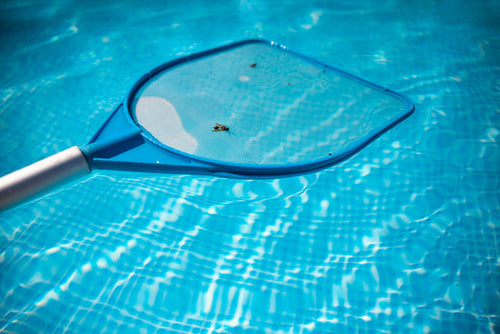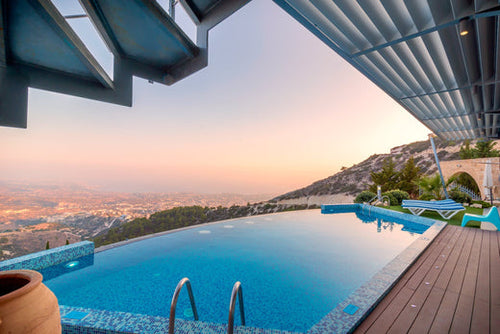What is Cyanuric Acid (CYA) and How Do I Lower It?

Ok Water Warriors, you’ve likely encountered the term "cyanuric acid" (CYA) before, but what is this stuff? This chemical compound plays a crucial role in pool maintenance, particularly in outdoor pools exposed to sunlight. Cyanuric acid is also sometimes referred to as chlorine stabilizer or pool conditioner. Let's delve into what cyanuric acid is, why it's important, and how you can manage its levels effectively.
What is Cyanuric Acid and Why Do I Need It?
Cyanuric acid is a stabilizer commonly used in outdoor pools to protect chlorine (and salt if you have a saltwater pool!) from degradation caused by sunlight. Chlorine breaks down when exposed to ultraviolet (UV) rays. Cyanuric acid forms a protective shield around chlorine molecules, preventing them from degrading too quickly. This stabilization extends the chlorine's effectiveness, making your chlorine last longer so you don't have to keep add chlorine as often in order to maintain the proper levels.
Without cyanuric acid, chlorine breaks down super quickly when exposed to sunlight--like reeeeally quickly. If you have an outdoor pool without CYA or stabilizer, your chlorine will dissipate in just a few hours! In fact, it only takes 17 minutes of exposure to sunlight rays to break down HALF of your chlorine. CYA is important for saltwater pools as well because exposure to sunlight will also degrade your salt levels.
Importance of Monitoring Cyanuric Acid Levels
While cyanuric acid is beneficial for pool maintenance, it's always possible to have too much of a good thing, so its levels need careful management. Over time, especially in pools where chlorine tablets containing cyanuric acid are regularly used, the concentration of CYA can build up. If you add chlorine to your pool, you will want to keep your CYA level from 30-50ppm, and if you have a saltwater pool you should bump it up to 60-80ppm. When levels exceed recommended limits it can lead to several issues:
- Reduced Chlorine Effectiveness: Excessive CYA can render chlorine less effective in sanitizing the pool water, potentially leading to algae growth and cloudy water.
- Damage Pool Equipment: Too high CYA can be harmful to your equipment. Yikes!
How to Lower Cyanuric Acid Levels
If you find that your pool's cyanuric acid levels are too high, here is how you can lower them effectively:
Dilution (Partial Drain and Refill): Partially drain the pool water and refill it with fresh water. A general rule of thumb is if your CYA is 10% too high, then drain and refill 10% of your pool water. This dilutes the CYA concentration in the pool. After you have drained and refilled with fresh water, run your pump for a few hours to mix the new water in and then retest to see if your CYA levels have been sufficiently reduced. If they are still too high, repeat this process until they are at the correct levels.
Avoid Further Buildup: Once you've lowered CYA to the desired level, monitor and control its accumulation. Most people don't have to worry about CYA build up since CYA is regularly splashed out of the pool and diluted over time. However, if you find CYA build up is frequently an issue in your pool, you may need to minimize the use of CYA-containing chlorine products, like chlorine tabs, and start using liquid chlorine or other non-stabilized forms periodically.
Conclusion
Maintaining appropriate cyanuric acid levels in your pool is essential for ensuring effective chlorine use and a safe, enjoyable swimming environment. By understanding how CYA functions and employing the right methods to manage its levels, you can keep your pool water clean, clear, and properly sanitized throughout the swimming season.
Remember, regular testing and monitoring of cyanuric acid levels alongside chlorine and pH levels will help you maintain a healthy and inviting pool environment all summer long. That's all for today folks, now get back to lounging in your beautiful pool!



